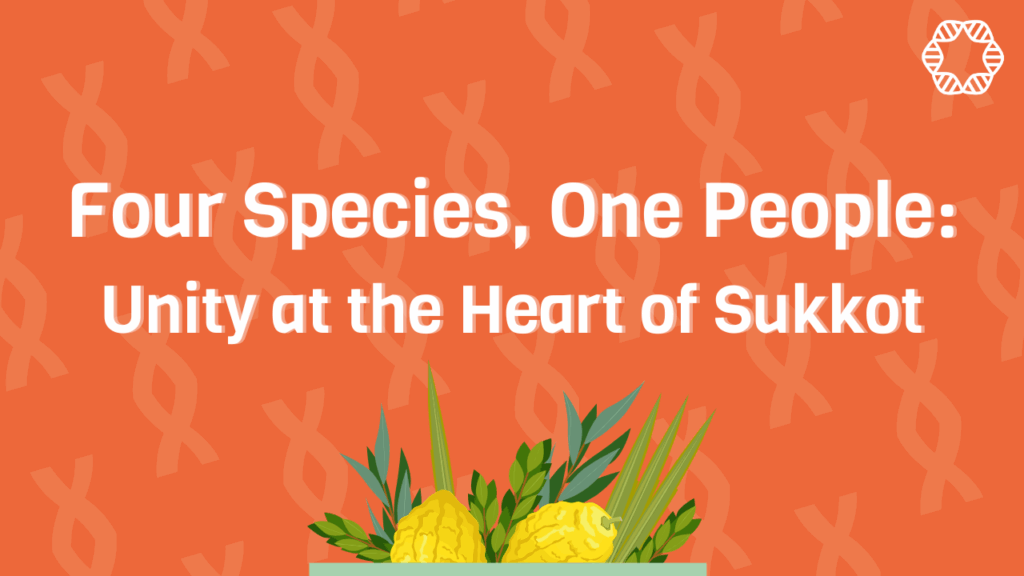by Gidon Schwartz, Education & Outreach Executive
As we arrive at the third of the festivals in quick succession, we move from the Days of Awe into the festival of Sukkot. Unlike Rosh Hashanah and Yom Kippur, where the themes are clear and direct – reflection, repentance, and renewal, the message of Sukkot can feel less obvious. On Rosh Hashanah, nearly all the practices guide us to look back on the past year and ahead to the coming one, and Yom Kippur is entirely centred on teshuvah – repentance. Sukkot, however, presents us with a wide range of seemingly unconnected practices: eating in the sukkah to symbolize our trust in God, rituals tied to the harvest, and, of course, taking the Four Species (arba minim).
At first glance these practices may seem random, but in a time when the Jewish people often feel more divided than ever, the Four Species offer us a profound lesson about unity, especially when we look closely at some of the details of the mitzvah.
A classic rabbinic teaching explains that the Four Species symbolise four types of Jews, each one unique in whether it has taste, fragrance, both, or neither, representing the spectrum of qualities within the Jewish people. Yet a further depth to this teaching emerges through two halachic details. First, unlike other mitzvot with multiple parts, the arba minim can only be fulfilled when all four species are present. For example, if someone can only put on one tefillin (the head or the arm), the mitzvah is still fulfilled, but if even one species of the arba minim is missing, the mitzvah cannot be performed at all. Historically, before global trade, entire communities in Eastern Europe sometimes lacked access to an etrog, and without it, they could not perform the mitzvah at all, not even partially. The message is clear: if one part of the Jewish people is missing, the whole is incomplete. Second, it is not enough to simply hold the Four Species together; they must be physically bound together – yes, those little baskets are an intrinsic part of the mitzvah. Unity does not happen by accident; it requires deliberate effort and strength.
This message of unity runs deeper than ritual alone. It is not only about sharing practices like sukkah or lulav – it is woven into our very DNA. Research has shown that Jews are around ten times more likely to share genetic markers with other Jews, whether Ashkenazi, Sephardi or Mizrahi, than with non-Jews. Not only that but another remarkable thing about the arba minim is they are all native to the Middle East; not only do our practices originate from there but our DNA does too. Our shared genetic haplotypes (a geeky science word for shared section of DNA) trace back to the Middle East roughly 2,500 years ago, around the time when Ashkenazi and Mizrahi communities began to diverge. In other words, not only do our practices originate there, but so does our very genetic story. You may look more like your next-door neighbour than to a Jew thousands of miles away, but genetically the reverse is often true. In fact, many Jews share closer DNA connections with Iraqi and Iranian populations than with non-Jewish people living next door in the UK.
So, this year, as we bind the Four Species together, we are reminded that they symbolize the unity of all types of Jews. That unity is more than symbolic, it reflects something deep within us, embedded in our DNA. The challenge is to make that inner connection visible on the outside, to strengthen our bonds with one another in action as well as in spirit.
Chag Sameach!

